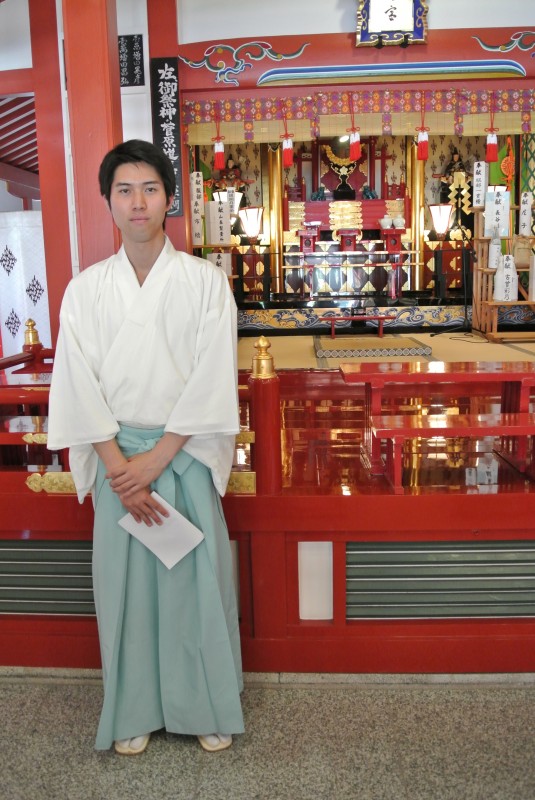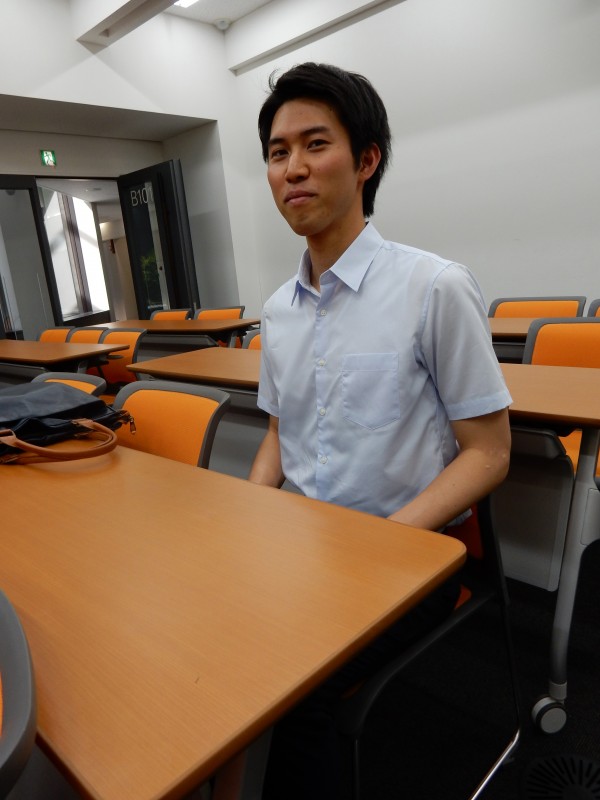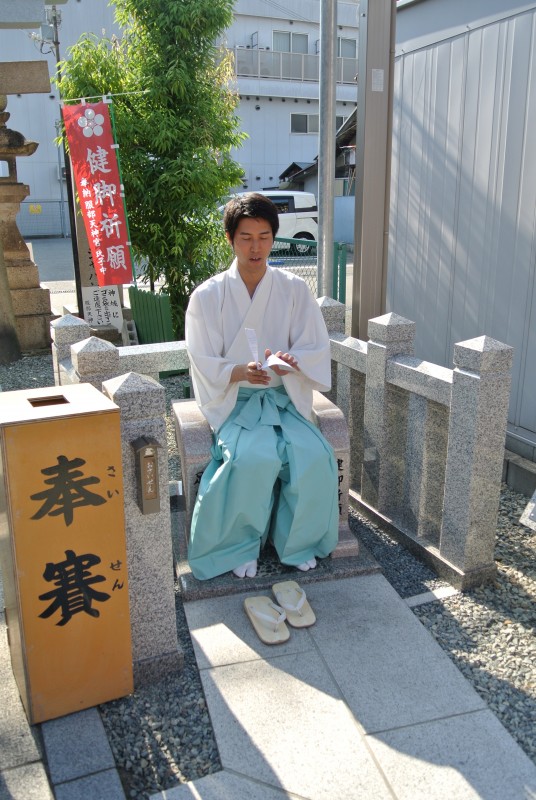
Gon-negi, Taishi Kato
Taishi Kato (加藤大志) is a young Shinto priest, who will be doing a postgraduate course at SOAS in London from September. His father is head priest of the Hattori Tenjingu in Toyonaka City, Osaka, recently featured in Green Shinto. While in the UK, Taishi is keen to give talks and presentations about Shinto.
1) How did you become a Shinto priest?
After graduating from Keio University (business course), I straightly enrolled in Kokugakuin University. I took a one-year course to obtain the license of Shinto priest.
2) What was it like growing up in the house of a priest?
I often ate the food which was offered to the kami, such as sea bream. During New Year’s holiday season, our family members helped to manage the Jinja, such as selling good luck charms.
3) How and when did your family first become associated with Hattori Tenjingu?
My great-grand father served as the chief priest of the Ikuta Shrine in 1945 and he tried to look for a Shinto shrine which the family could hand down to a descendant. He found Hattori Tenjingu which was ruined by the war at that time. He asked the priest who lived nearby whether he could take over the position of chief priest. And so the right of managing Hattori Tenjingu came to belong to my family. As my great grandfather was still chief priest at Sanctuary Ikuta, he let my grandfather become chief priest of Hattori Tenjingu. This is the story of how Hattori Tenjingu became associated with my family.
4) Legally speaking, who does the shrine and its land belong to? How does the shrine manage to finance itself?

Taishi Kato will be a postgraduate student from September
My father has the right to manage the shrine, but legally speaking Hattori Tenjingu is registered as a religious corporation which owns the land and buildings. If we have to rebuild the sanctuary, basically Hattori Tenjingu and the ‘soudaikai’ (see below) are responsible for that. And generally speaking, some of the parishioners and local companies donate money to rebuild the Jinja.
5) Please tell us about the parish association (‘ujiko’). How is it organised, how many members are there, and what role does it play?
In the case of Hattori Tenjingu, it is complicated. It is true that there is an ujiko area and it consists approximately of 300 people. But, Hattori Tenjingu is not regarded as a parish shrine but ‘Sukeigata Jinja’, which means the area supporting the Jinja is not limited. People throughout Japan can become a member or supporter of the Sukeidantai (support organisation). In the future I would like foreigners to become supporters too and participate in the development of Hattori Tenjingu.
With regard to the Sukeidantai, there are six different groups:
① Representatives of the parish, i.e. members belonging to the ujiko.
➁ Association of Toyonaka Ebisu, people who have made special contributions to Toyonaka City)
➂ Association of Hattori Inari, which consists of people who live in Toyonaka city.
④ Women’s Association of Hattori Tenjingu, i.e. female members of the ujiko (parish)
⑤ Association of Hattori Tenjin, with people from throughout Japan
⑥ Service Association of Hattori Tenjingu. Members consist of company presidents and celebrities.
All of the groups play an important role in supporting Hattori Tenjingu. Basically, their role is to help prepare for ceremonies and manage the sanctuary.
6) How do you see the future, both in terms of Shinto as a whole and for yourself personally?
Most people assume that it will be hard to manage Jinja in the future. However, from an international perspective, Shinto has infinite possibilities to contribute to Japan as well as the international field. With the advance of global society, all sorts of things will become homogenized. On the other hand, historically speaking, Shinto has been developed by the Japanese aesthetic sense and sensitivity of the general public. In other words, as far as the history of Shinto is concerned, the dependence on Japanese culture is quite high. Therefore, there are some differences from the global context. If Shinto priests can explain the essential aspects of Shinto which have roots deep in Japanese culture, such as Harae (祓え) and Kegare (ケガレ), in a global context, there is a strong possibility that Shinto will develop internationally.
*******************
Taishi Kato can be contacted at <k.taishi0926[at mark]gmail.com>

Taishi Kato demonstrates the leg protecting stone chair in his father’s shrine of Hattori Tenjingu,

Hello Taishi Kato,
a question – about a blessing ritual to be held in Switzerland. Are you familiar with the ritual of an opening and inviting natural energies and gods into a new sake brewery, a blessing? Would you do this ritual also in the Swiss Alps? There are followers like myself already who strongly believe in Green Shinto and the Gods of elements also being in the Alps. please advise us. We would need you this November new moon.
Thank you for the query. The message has been passed on to Taishi to deal with directly…